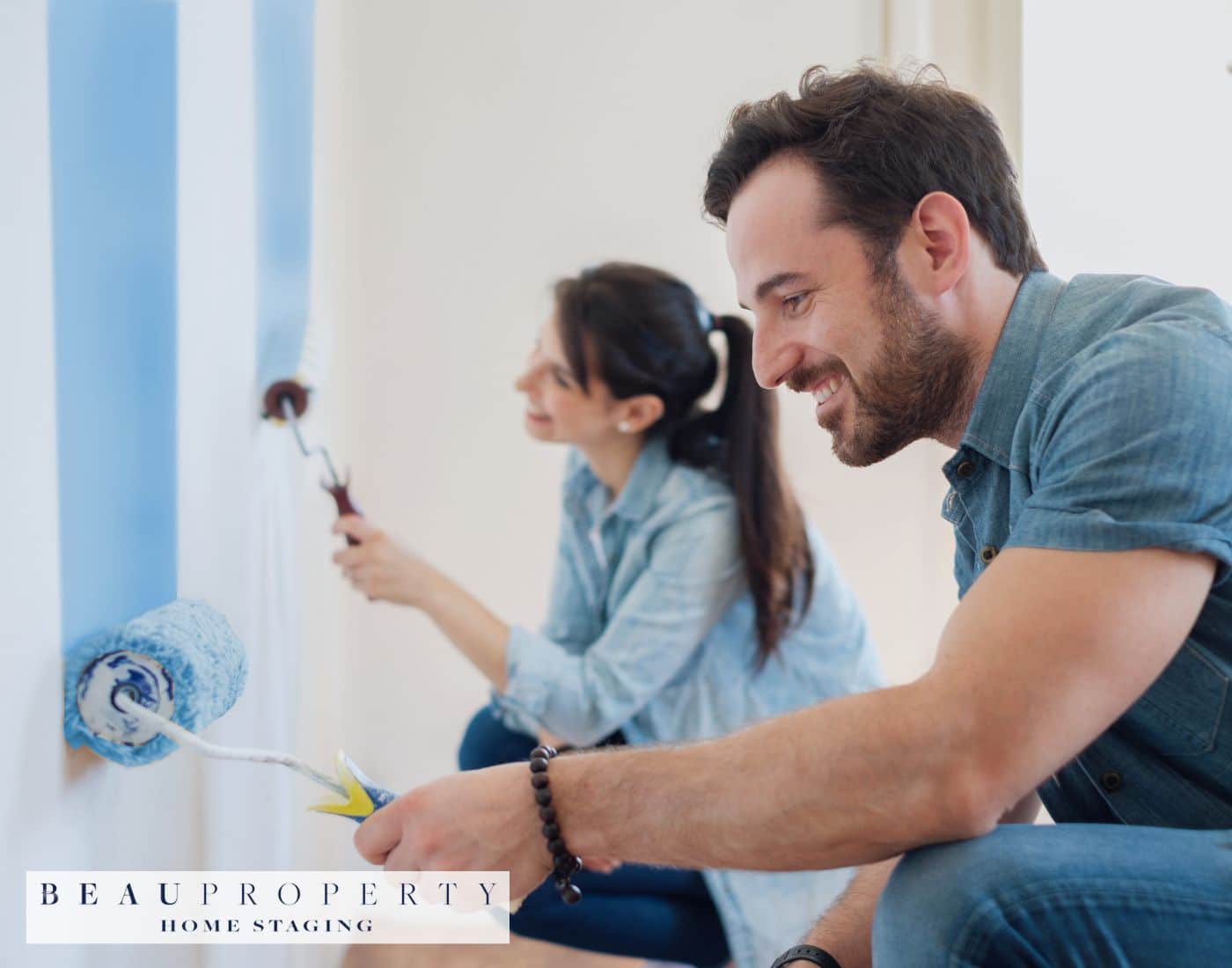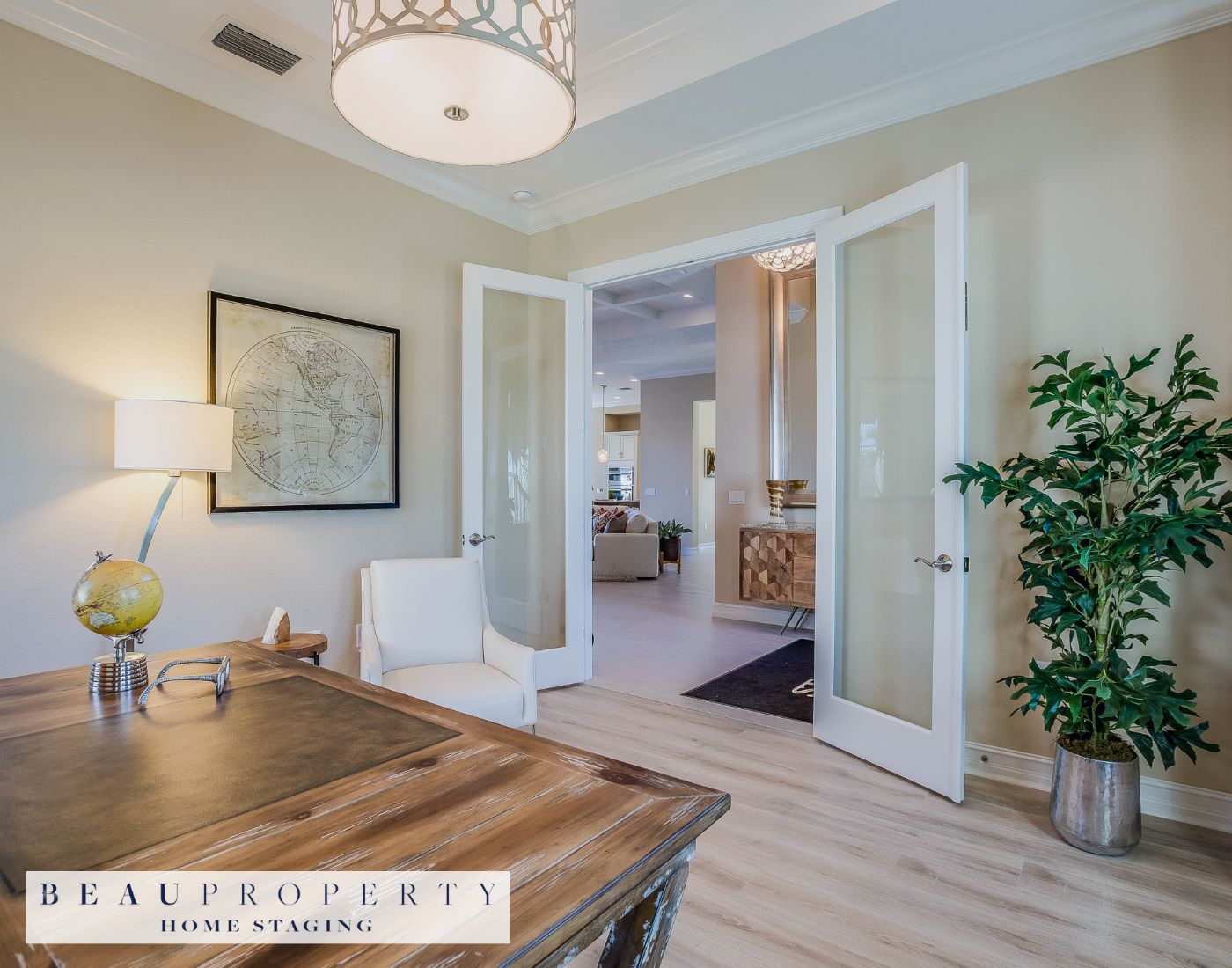Introduction to DIY Home Staging
Home staging is a crucial step in preparing a home for sale. It involves strategically enhancing and showcasing the best features of a home to appeal to potential buyers. The goal is to make buyers fall in love with the home and envision themselves living there. Staging helps create a great first impression and can lead to a quicker sale, often at a higher price point.
Crucial step in attracting buyers
Home staging transforms a house into a welcoming, attractive product that appeals to buyers’ emotions and lifestyle needs. It goes beyond regular cleaning and maintenance to style the home for the real estate market. Staging highlights architectural details, optimises lighting, rearranges furniture for better flow, and adds decorative accents to create warmth and style.
First impressions
First impressions matter tremendously in real estate. Staging helps make that vital first impression by showcasing the home in its best possible light right from the start. It sets the tone for buyers from the moment they pull into the driveway and step inside the front door.
Staging highlights the home’s curb appeal through exterior enhancements like fresh paint, updated landscaping, and attractive outdoor lighting. It welcomes buyers into an interior space that is clean, clutter-free, and styled in line with current trends. This great first impression gets buyers excited about the home from the start.
Areas to focus on
Key areas to focus DIY home staging efforts include:
- Decluttering and removing personal items to neutralise space
- Enhancing curb appeal through landscaping, painting, lighting
- Optimising natural and artificial lighting
- Strategically arranging furniture to improve flow
- Incorporating accent décor for warmth and style
Attention to these areas creates an inviting, stylish home for buyers to envision as their own. This transforms a house into an attractive product that meets buyers’ desires and facilitates sales.
Decluttering and Depersonalizing
Decluttering a home before putting it on the market is one of the most important steps in preparing for a sale. Clearing out excess items makes spaces appear larger, brighter, and more welcoming to potential buyers. It also helps highlight the best features of your home. Here are some key areas to focus your decluttering efforts.
Clearing the Clutter
Start by clearing flat surfaces like countertops, tables, dressers, and nightstands. Remove stacks of paper, piles of junk mail, unused gadgets, and other visual clutter. Consider removing extra furniture pieces that make rooms feel cramped. For example, temporarily storing excess chairs, side tables, or bulky cabinets can help open up space.
Neutralising the Space
Depersonalizing involves removing family photos, art, collectibles, and other items that give a home a lived-in feel. This allows potential buyers to imagine the space as their own. Pack away personal memorabilia and decor in storage bins. Also consider painting over brightly coloured or bold accent walls with neutral hues.
Tips for Appealing to a Range of Buyers
- Remove items that express strong political, religious, or lifestyle views
- Edit and organise collections so they don’t overwhelm spaces
- Clean out closets and remove over half the contents so they appear spacious
- Repaint rooms in light, neutral colours if needed
Taking time upfront to declutter and depersonalise your home can really maximise its appeal to the widest range of buyers. This increases your chances of an offer and ultimately achieving your selling goals.
Enhancing Curb Appeal
The exterior of a home makes the all-important first impression on potential buyers. Investing some time and effort into enhancing your home’s curb appeal can pay big dividends by immediately attracting buyers and setting a positive tone for the rest of their showing.
Improving Landscaping and Exterior Details
An overgrown yard full of weeds does little to entice buyers. Trimming bushes and trees, clearing leaves, planting flowers, and laying fresh mulch demonstrates pride of ownership. Repaint faded exterior walls or doors in an appealing neutral tone. Upgrade old house numbers, mailboxes, and outdoor lighting fixtures for visual impact. A freshly sealed driveway also signals that the home has been well-cared for.
Welcoming Front Garden and Entrance
The entryway sets the stage for what buyers can expect inside the home. Paint the front door an eye-catching colour and make sure it gleams. Flank it with potted plants or flowers and ensure any walkways are free of cracks and debris. Install a new welcome mat to set a hospitable tone. If you have a covered entryway, pendant lighting can cast a warm glow. For curb appeal, a bench or rocking chairs on the porch provide a homey feel.
Curb Appeal Sets the Tone
Some studies show over half of buyers will drive by a home first before deciding to view it. Ensuring your home puts its best face forward with stellar curb appeal means more buyers in the door. It also communicates that the interior likely received the same level of care and attention. Well-executed landscaping and exterior upgrades signal to buyers that they can expect a move-in ready, attractive interior as well. Great curb appeal paves the way for buyers to envision your home as their future abode.
Optimising Lighting
Lighting can make or break a home staging. Proper lighting helps showcase the best features of a home and creates a warm, welcoming atmosphere that appeals to buyers. Here are some tips on using lighting effectively in home staging:
Maximise Natural Light
Start by making the most of natural light. Thoroughly clean all windows, inside and out, to allow more sunlight to stream in. Open all curtains and blinds to let the light spread far and wide. Consider adding mirrors to amplify and reflect natural light into darker corners of rooms.
Upgrade Fixtures
Replace any old, dated light fixtures with new, modern ones. Opt for fixtures with energy-efficient bulbs that provide bright, uniform light. Install dimmers so buyers can test different lighting levels. Accent the exterior with path lighting, spotlights on architectural details, and landscape lighting.
Create Light Layers
Effective home staging uses layered lighting. Overhead ceiling fixtures serve as ambient light. Desk lamps, reading lamps, and vanity lighting provide task lighting. Finally, floor lamps, table lamps, and wall sconces add accent lighting. Using all three creates depth and highlights the features of each room.
Showcase Architectural Details
Strategically place lighting to highlight the home’s best architectural elements like crown moulding, tray ceilings, and exposed beams. Wall sconces flanking a beautiful fireplace put the focus directly on that stunning feature.
Use Warmer Bulbs
Choose bulbs in the 3000K to 3500K colour range to give off a warm, inviting glow. Avoid cool blue-toned lighting, which can make spaces feel stark and sterile. Warmer lighting helps buyers envision the home as cosy and livable.
Proper lighting can brighten up rooms, create modern ambiance, and highlight architectural details – all of which can increase a home’s perceived value. Use these tips when staging your home for sale.
Rearranging Furniture for Flow
Creating a harmonious flow through the home is crucial to helping potential buyers envision themselves living in the space. Strategically arranging furniture opens up floor space to make rooms appear larger and more functional. Focus on creating open pathways that lead the eye through key living spaces and highlight architectural details along the way.
Emphasising Functional Spaces
Showcase the versatility of rooms by setting up vignettes that depict how spaces could be used. For example, stage a cosy reading nook in the corner of a bedroom or set up a home office space with a desk and chair. This helps buyers visualise different living functions within the existing layout.
Guiding the Flow
Use furniture placement to guide buyers from one room to the next. Angle seating toward doorways or pathways through adjoining rooms. Remove excess furniture that disrupts flow or makes hallways appear cluttered. Clean traffic pathways invite buyers to explore the home.
Drawing Focus to Architectural Details
Arrange furnishings to highlight attractive architectural elements. Angle furniture to direct sightlines toward statement fireplaces, built-in shelving, exposed beams or large windows. This showcases beautiful design details while still keeping the space livable.
Adding Finishing Touches
Enhancing a home with thoughtful accent decor can make a big difference in attracting potential buyers. Simple additions like fresh flowers, decorative pillows, and artwork can add warmth, style, and visual interest to spaces. When staging a home for sale, focus on adding tasteful accents that appeal to a wide range of buyers without overwhelming the existing decor.
Accent decor
Strategically placed vases of fresh flowers and plants are an easy way to boost the appeal of any room. Opt for neutral colours like white, ivory, or soft pink blooms that will complement most colour schemes. Place floral arrangements in entryways, living spaces, bedrooms and bathrooms for a welcoming touch.
Update throw pillows on sofas and beds with ones that incorporate crisp, modern patterns and textures. Stick to solids or subtle patterns in light neutral shades. Too many wild prints can distract buyers. For artwork, landscape photography and nature prints have widespread appeal.
Final clean-up
Before showing your home, do a deep clean from top to bottom. Scrub countertops, mop floors, dust ceiling fans – leave no surface untouched. Clean windows and mirrors to maximise brightness. Consider professional carpet and drapery cleaning. The cleaner the home, the more appealing it will be to potential buyers.
Small touches
It’s the little things that count when staging a home for sale. Make sure all lightbulbs work and are the appropriate brightness for each room. Replace any chipped paint or worn hardware. Organise closets and drawers so they appear spacious. Add a new welcome mat at the front door. These small improvements create a polished look that appeals to buyers.
Conclusion
After reading through this blog post, it should be clear just how impactful DIY home staging can be. Taking the time to declutter, depersonalise, and creatively rearrange your home before listing it can make a dramatic difference in attracting potential buyers. Small touches like improving curb appeal, adding stylish accents, and showcasing architectural details create an inviting atmosphere that helps buyers envision your home as their future residence.
Recap Key DIY Staging Tips
To recap, some of the most essential DIY staging tips covered in this post include:
- Clearing out clutter and removing personal memorabilia
- Landscaping and power washing the exterior
- Painting walls neutral colours
- Upgrading lighting fixtures
- Rearranging furniture to open up space
- Incorporating decorative accents like houseplants, artwork, and area rugs
Taking even small steps in these areas can dramatically improve the presentation of your home during showings. The perceived value goes up when buyers can easily picture themselves living in the bright, clean, and attractively furnished space you create.
DIY Staging
For sellers reading this, take the DIY staging concepts to heart. Don’t underestimate the power of first impressions – invest the time and effort into preparing your home for sale. Decluttering and decorating for resale value rather than personal taste can really pay off when that dream offer comes through. Use the tips in this post as motivation to get started!







